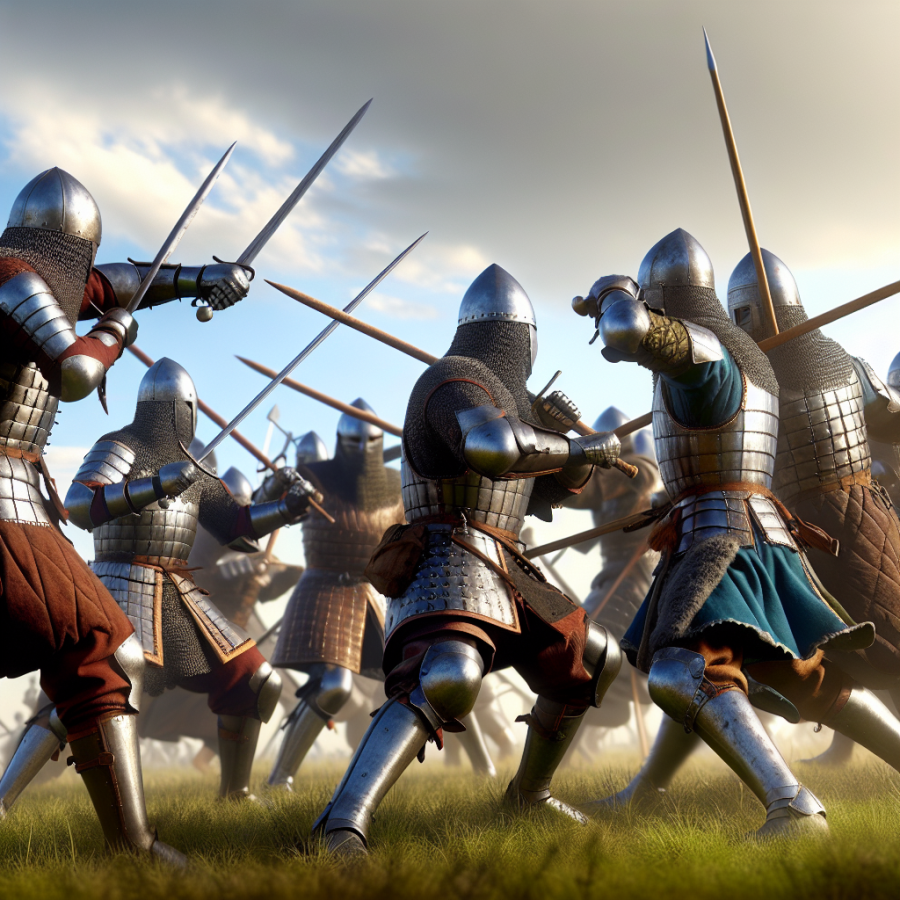Equipment and Training: Gearing Up for the Ultimate Medieval Showdown
In the thrilling world of buhurt, selecting the right equipment and receiving proper training are crucial steps for any combatant aiming to compete in full-contact medieval battles. This high-intensity sport demands gear that not only replicates the aesthetic of medieval armor but is also designed to withstand the brutal clashes and provide maximum protection. Here, we delve into the essentials of gearing up for the ultimate medieval showdown.
**Armor and Protection:** Buhurt armor must meet stringent standards to ensure it is safe for use in combat. Authenticity is important, but so is the functionality and the ability to absorb and disperse the force of blows. Helmets are arguably the most critical piece; they must offer excellent protection for the head and neck, often featuring a visor to guard the face. Historically accurate materials like hardened steel are commonly used, but must be complemented with interior padding to mitigate impacts. Body armor, including breastplates, backplates, gauntlets, and leg protection, should encase the fighter, allowing for mobility while minimizing weak points.
**Weapons:** The choice of weapon is a personal one, but all must follow the regulations set by buhurt organizations. Historically inspired swords, polearms, axes, and maces are crafted to look authentic but are blunted for safety. The weight and balance of these weapons are critical for effective use, requiring them to be both durable and manageable.
**Shields:** Shields play a defensive and offensive role in buhurt. They come in various shapes and sizes, such as the kite shield for more coverage or the buckler for quick, responsive movements. While protecting oneself, a shield can also be used strategically to push or destabilize opponents.
**Training Wear:** In preparation for battle, combatants often train in padded armor, which mimics the weight and resistance of full battle gear while offering increased mobility and reduced risk during practice sessions. Padded gloves, helmets, and gambesons are standard for safe and effective training.
**Physical Training:** Physical conditioning cannot be understated. Buhurt fighters engage in strength and endurance training to wield weapons with precision and maintain stamina throughout a fight. Agility drills and combat techniques are practiced extensively, often under the guidance of experienced fighters who can offer insights into both individual and team tactics.
**Martial Arts and Technique:** Knowledge of historical fighting methods is advantageous. Buhurt fighters study historical texts and combat treatises to refine their technique, marrying historical accuracy with effective modern combat strategies.
Read also:
Revitalizing Nightlife: Innovations in the Modern Club Scene
Exploring the Historical Roots and Rules of Buhurt Battles
Buhurt, a full-contact medieval combat sport, derives its name from the Old French 'behord', which means 'tumult' or 'noise', and was historically a part of the grand mêlée events in tournaments of the Middle Ages. It was not merely recreational - these events served as crucial combat training for knights, preparing them for the chaos of real warfare. The historical roots of Buhurt are steeped in the training grounds of medieval European knights where, instead of training passively, they engaged in mock battles to hone their combat skills and strategies.
In the context of historical accuracy, the rules and equipment used during original Buhurt battles varied between regions and periods. However, commonalities did exist in the form of melee engagements, where teams of knights would clash in a chaotic simulation of battlefield combat. Unlike jousting, which was a series of one-on-one encounters, Buhurt battles were collective efforts that could range from a few fighters to hundreds on each side.
During the medieval period, Buhurt battles were watched by large audiences and were akin to the spectator sports of today. They had rules, although they weren't always standardized or written down. Safety was a concern, but it was balanced against the need to realistically simulate combat. Blunted weapons were used, and although the goal was not to kill, serious injuries were common and accepted as part of the risk. It's worth noting that the Church, in an effort to reduce violence among knights, instituted the Peace and Truce of God movement, which aimed to set rules for when and how knightly combat could occur, thus impacting Buhurt practices.
Today's Buhurt battles are a resurrection of these historical practices. Participants don medieval armor that is functional and historically inspired. The modern incarnation of Buhurt adheres to a set of standardized rules to ensure safety while maintaining the spirit of the medieval combat. Helmets are designed to provide maximum protection, and weapons are replicas of their historical counterparts, made to specific safety specifications. Blows are delivered with full-force, making combat highly physical and intense.
Modern Buhurt leagues, like the Historical Medieval Battle International Association (HMBIA), govern the conduct of these battles. They have clear frameworks governing aspects like weapon dimensions, permitted fighting moves, and the use of authentic protective gear. This ensures a degree of safety without diluting the ferocity and excitement that defines Buhurt.





